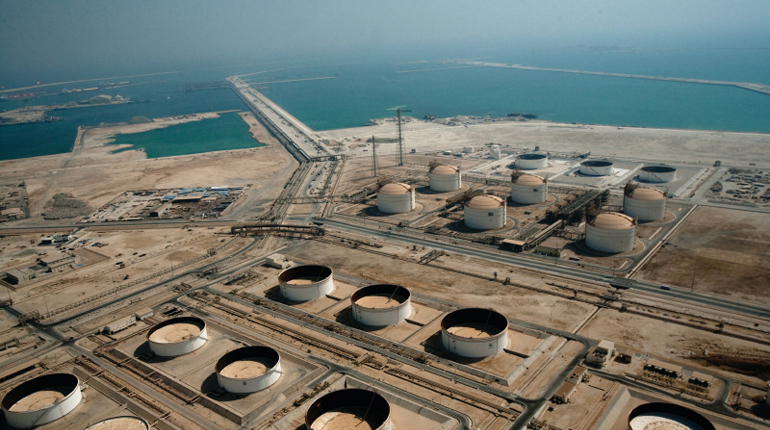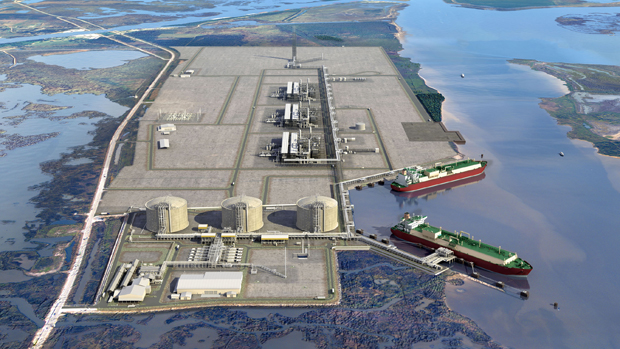 Zeynep Sultan began generating power in Amurang, North Sulawesi in January. (Karadeniz Holdings)
Zeynep Sultan began generating power in Amurang, North Sulawesi in January. (Karadeniz Holdings)
Indonesia’s ambitious electrification project is facing setbacks, forcing the government to lease power ships to meet soaring demand.
The government plans to build 35 GW of power generation capacity by 2019 to counter growing demand and power shortages in a number of the country’s islands. However, this target is considered ambitious, and delays in acquiring the land and securing financing mean the deadline is looking unlikely to be met.
To ease the power shortages in the interim, state utility Perusahaan Listrik Negara (PLN) has signed a power-purchase agreement with Karadeniz Holding, a Turkish conglomerate which builds, owns and operates a fleet of power ships.
Under the agreement, PLN will lease five vessels – which act as floating power plants – with a combined capacity of 540 MW for five years.
The first vessel, Zeynep Sultan, arrived in Indonesia in December and was delivered to Amurang, North Sulawesi in January. It started providing power soon after it arrived, but is limited to just 82 MW instead of its full 125 GW capacity because of the poor state of the power grid in the area, according to reports from local press.
The other four ships have yet to be delivered and will be moored at Kupang in East Nusa Tenggara, Mataram in West Nusa Tenggara and Amurang in North Sumatra over the coming months.
The power ships are dual fuel, capable of running on gas or heavy fuel oil (HFO), but are anticipated to run on HFO initially because of a lack of available gas.
"Right now, we use HFO for power generation on our ship," Hendri Satrio, communications adviser at Karadeniz Holdings, told Interfax Natural Gas Daily, adding "but if natural gas were available, we could switch to natural gas operation without any difficulty". Requests to PLN for information on whether gas would be made available to the power ships were unanswered at time of publication.
However, while the ships may provide a stopgap, doubts linger about the government’s power plans in the medium-to-long term.
If the government’s 35 GW project is to succeed, Jakarta needs to invest in improving and expanding the electricity grid instead of just focusing on expanding capacity. It will need outside help to finance this, according to Benny Bernarto, a partner at Australian based law firm TNB & Partners.
"The government allocated around $22.5 billion from its 2016 budget for infrastructure development, including electricity. However, PLN will not be able to meet the 35 GW target without support from independent power producers and funding from third parties," Bernarto told Interfax Natural Gas Daily.
Bernarto expects there to be substantial appetite among local and foreign investors, but it will take time for this investment to materialise, especially if it is coming through multilateral lending agencies and export credit agencies.
"The government is working to deal with the investment challenges arising from a project of this scale," Bernarto said. But he had no concerns that the projects would not attract investment, adding "there is no lack of appetite among local or foreign investors to participate in these electricity tenders".
Nuclear option
Over the longer term, Indonesia is considering renting floating nuclear power plants to provide low-cost power to the archipelago. A memorandum of understanding signed last year between Russia’s Rusatom Overseas and Indonesia’s National Nuclear Energy Agency expressed an interest in developing floating nuclear power plants.
The first purpose-built floating nuclear power plant is being constructed by Rosatom at Russia’s Baltic Shipyard and is scheduled to be delivered later this year. The vessel, Akademik Lomonosov, has a capacity of 70 MW and will provide power to the remote Russian town of Pevek, Chukotka.
Beyond providing baseload power to remote communities, it is suggested that floating nuclear plants could provide power for offshore oil and gas activities. This would also be desirable for Indonesia, which has an established offshore oil and gas industry.
So far, the only precedent for the technology is a reactor that was deployed by the United States to provide additional power supply to the Panama Canal in the 1960s, so their potential is unclear.
"Floating nuclear power plants are only now emerging as an energy supply option so the full range of advantages and disadvantages will only become apparent through experience," Jonathan Cobb, senior communications manager at the World Nuclear Association, told Interfax Natural Gas Daily.
Despite this uncertainty, nuclear reactors have been used to power a range of military and civil vessels since 1955, so there is a lot of experience as to what is required to operate nuclear power plants safely at sea.
Nuclear power plants operating offshore have safety advantages as they are further from population centres and are less at risk from earthquakes and tsunamis. However, if something was to go wrong, it could be difficult to provide assistance.







Talk to us
Natural Gas Daily welcomes your comments. Email us at [email protected].